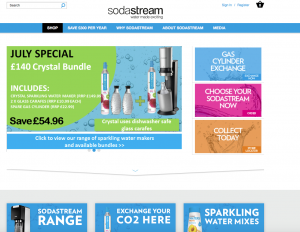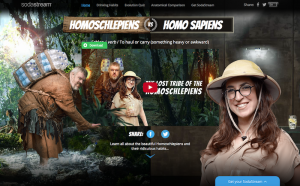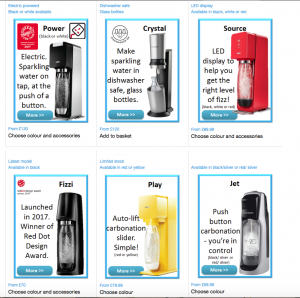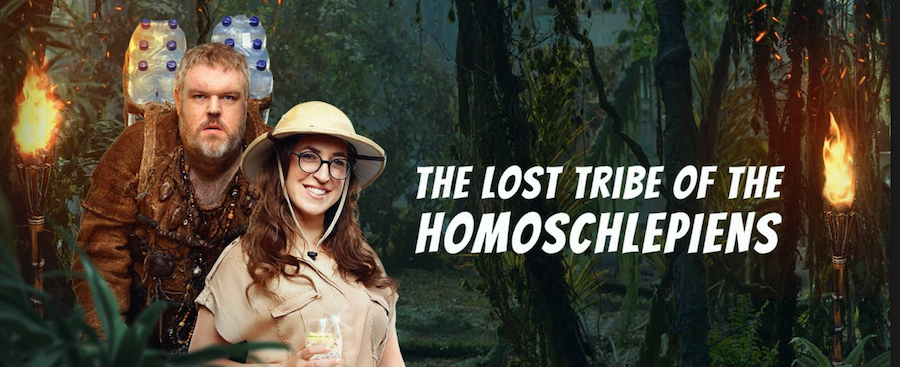I was interested to read about the latest communication campaign by Sodastream, the home carbonation brand, in this week’s Marketing here. The campaign is the latest move in an attempt to rejuvenate the brand. It originally achieved success in the 1980’s as a fun way to make flavoured fizzy drinks at home, with one in every two UK households having a machine according to the CEO, Daniel Birnbaum. However, today the brand is seen as a bit old fashioned and dated according to the article, with Birnbaum admitting the “challenge is great” to shift the image of a brand with “a heritage that’s off-strategy”.
The brand does seem to be heading in the right direction, reporting here 2016 revenue up 14.5% to $476.1 million and net income up 105.9% to a record $44.5 million. Below I look at the brand’s rejuvenation and how even more fizz could be added.
1. GOOD: Tap into trends
It is interesting to see how Sodastream has decided to focus on the environmental benefits of using home carbonation. Back in 2012 the brand’s communication emphasised fun and convenience and being more overt in trying to refresh the 80’s campaign, using the same tagline ‘Get busy with the fizzy’, as I posted on here. Tapping into concerns about the environmental damage of bottled water and positioning Sodastream as a solution feels like a good move to me. This rides the wave of negative PR about bottled water and creates the opportunity for some highly distinctive and headline-grabbing campaigning by Birnbaum:
“This generation, plastic bottles deserve the treatment of cigarettes. These bottles deserve to have warning labels on them. Single use bottled water should be illegal, and I believe there will be a time in our lifetime when it is.“
The potential for growth is shown by household penetration in environmentally conscious Sweden being 24% compared to only 1.5% in the United States, according to this report.
2. OPPORTUNITY: make the brand the hero?
The latest film “Depicts bottled water-swilling humans as a race of primitive troglodytes, the ‘Homoschlepians’, who have not yet achieved enlightenment about the reality of plastic bottles.”
Using humour to make fun of the millions of people buying bottled water seems like a good idea, rather than taking a more hard-hitting, lecturing approach. And the tone feels lighter and less in-your-face than the last campaign, ‘Shame or glory’, which made the case that buying bottled water was something to be ashamed of.
But both films strike me as being very focused on the problem of bottled water, not the solution. All the drama and commercial production effort has gone into bringing to life the problem. The whole Homoschlepians thing is about portraying bottled water buyers, the brand’s target buyer, as neanderthals. The Soda Stream brand being appears almost an afterthought 2o seconds from the end of the 2 minute 22 second mini movie. And the two links at the end of the Youtube film are both to find out more about Homoschlepians. In the brand’s defence, the film has got a decent number of views on YouTube, with almost 5million views in under a week. But for the next iteration it would be great to see the same level of appeal with more drama on the Sodastream brand. Nespresso don’t invest their cash in making fun of coffee jar buyers, do they? They focus on dramatising the benefits of being a Nespresso owner.
3. PROBLEM: schizophrenic mix?
One issue I would recommend working on is to make the whole mix more coherent to get more of an ‘amplifier effect’. The brand’s website looks outdated and rather dull, a stark contrast to the production values and humour in the brand’s advertising.

In fact, all the investment in web design seems to have gone into bringing to life the Homoschlepians concept, with a dedicated adnd snazzy looking site!

Perhaps some work on the brand purpose would be a good place to start: this feels very ‘safe’ and lacking in passion compared to the stance taken by the CEO

4. BIGGER PROBLEM: complex range
My biggest issue with the Sodastream rejuvenation is the complexity of the product range. If you sit through the two minutes plus about Homoschlepians …. then click to the site about Homoschlepians …. then scroll down to finally find information on buying a machine …. then click to select your country… then land on the brand website… what do you find to help you actually buy a bloody machine? Check out the product range below. Even after spending 20 minutes or so reading the product descriptions and even watching YouTube films (the things I do for you dear reader), and I am none the wiser about why a Power machine costs more than twice a jet.
Sodastream is adding uneccessary friction into the buying process, and could do a much better job at presenting the benefits and features of each product in the range. And do they really need six of the machines anyway? Back in 2012 there were only four. The brand could take a leaf out of Apple’s book, who are masters as simply communicating complex information and explaining the benefits of products in their range.

In conclusion, Sodastream is fascinating example of brand rejuvenation. The leadership team have made what I think is a smart move to be more radical and ditch most of the brand’s historical equities, including the tagline and focus on fun. There is plenty of room to grow, given the low household penetration. And a more brand-focused, coherent mix could help the business grow even faster in my view.
